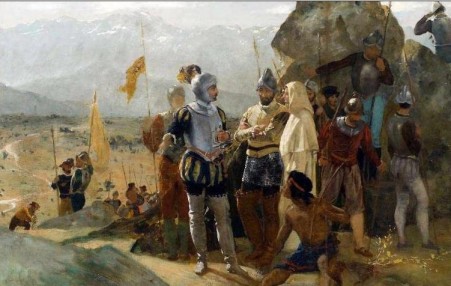Early inhabitants
The people that inhabited the central regions of the country are known to have lived in the early and later stages of the Agricultural ceramic period.
– Llolleo Culture (300-800 ad): this people developed between Choapa (Coquimbo Region) and Cachapoal (O’Higgins Region) rivers during the early Agricultural ceramic period. They were hunters, collectors and also lived of sea products, quinoa and corn plantations. They also grinded grain. They burried their dead with a funerary dowry under the floor of their houses, and sometimes had small home cementeries. Their pottery stands out for its fine globular yars, that on many occasions depicted human figures and faces.
– El Bato Culture (800 bc – 800 ad): They lived in the early stages of the Agricultural ceramic period. They stretched from the mouth of Petorca River, along the coast of the Valparaiso Region, to the Cachapoal river, in the O’Higgins region. Families burried their dead under their rooms. They laid them down with their legs bent and their funerary dowry included tembetas, an ornament that they inserted between the lower lip and the chin. Their pottery recreated animal and vegetal forms.
– Aconcagua Culture (900-1536 ad): this culture was concentrated between basin of the Aconcagua (Valparaiso Region), Mapocho and Maipo (Metropolitan Region) rivers, during the late agricultural ceramic period. They dwelled in houses made of mud, straw and coligüe (Chusquea culeou) and gathered in little villages. Their economy was based mainly on the growth of quinoa and corn and the raising of Guanacos. Their cemeteries were characteristic for their great concetration tombs in form of mounds or graves. They burried their dead either individually or collectively, with a dowry made up of pottery, copper earrings, necklaces and clay jars, among other objects. They were skilled potters and manufactured bottles, pots and orange-like bowls that they sometimes decorated with geometrical designs.
Physical Regional Traits
– Valparaiso Region: the coastal plains are narrow throughout the zone. The Coastal Range, that meets the Andes in the northern part due to the transversal valleys (that only exists in this zone), and the Aconcagua river to the south, has distinguishing features and runs constantly between 5,000 and 6,000 meters above sea level. The intermediate depression stretches paralel to both moutain chains.
– Metropolitan Region of Santiago: it is the only region in Chile that has no coast. They Coastal Range here emerges sharply and seems as a wall to the south of the Aconcagua river (in the northern part of the region).
Heights here can reach 2,000 meters above sea level and drop up to 1,000 meters above sea level in the ranges that border the Maipo. Further south, the Coastal Range recovers some height, and forms deep valleys. The intermediary depression, also called Santiago basin, forms a fertile valley that stretches between the Chacabuco mountain chain, and angostura de Paine, to the south. The Andes is high and massive, with ventisqueros in some peaks.
– O’Higgins Region: the coastal plains in this region have a considerable development and their extension varies between 25 and 30 km. The Coast Range has soft undulations in its western side, does not surpass 800 meters of altitude and descends considerably to the south of Cachapoal river. The intermediate depression is divided into two zones in this region: the first is the northern zone, called the river basin of Rancagua. The second zone, that starts in the Pelequen narrow passage, is very narrow and with soft undulations in its beginning but widens as the latitude increases.The Andes has a width of approximately 50 kms and its peaks stretch beyond 4,000 meters above sea level.
– Maule Region: the coastal plains are highly developed, with an average width of nearly 25 km. The Coast Range more or less resembles the configuration it displayed in the O’Higgins Region and in the south zone of the Maule river. It is divided into chains that run parallel to each other and originate valleys with microclimates and soils apt for agriculture. The intermediate depression is, in general, a softly undulated plain, though it is flat in some stretches. It is narrower in the northern part of the region, and widens towards the south. The Andes Range has a sedimentary origin in the foothills zone of the Andes, with 420 km of extension and a width of between 30 and 45 km; it reaches heights of between 300 and 800 meters above sea level, while the moutain area barely surpasses 4,000 meters above sea level. Main volcanoes in the area are Peteroa (4,090masl), Planchón (3,977masl), Descabezado Grande (3,830masl) and Descabezado Chico (3,250masl).







